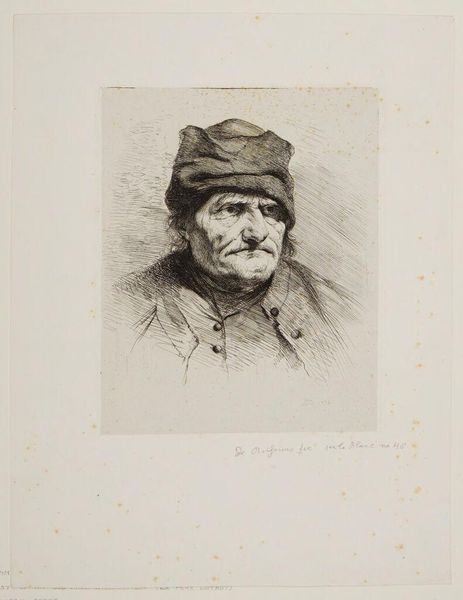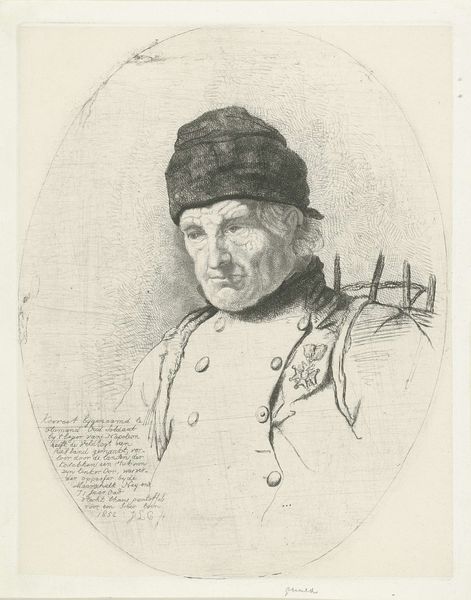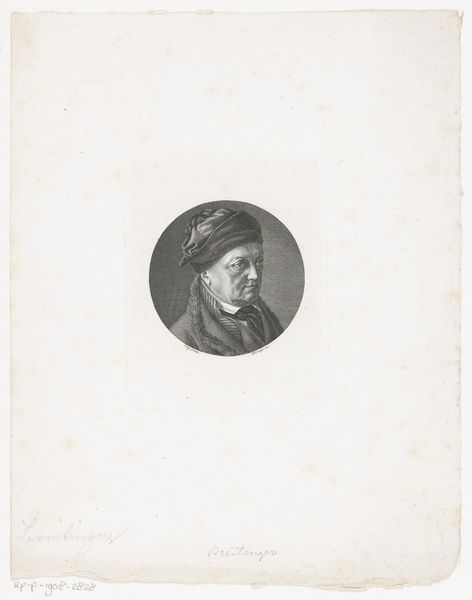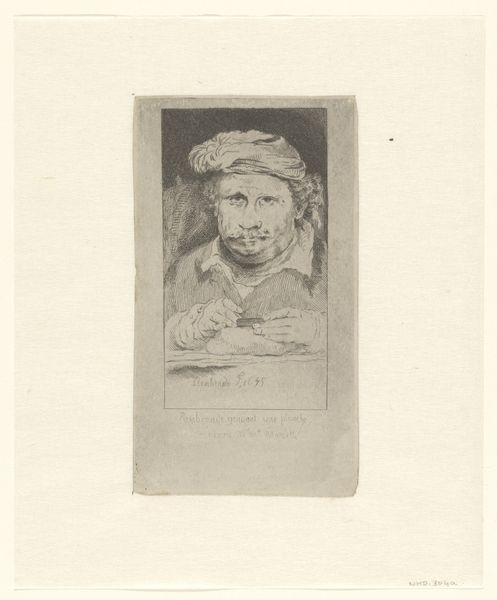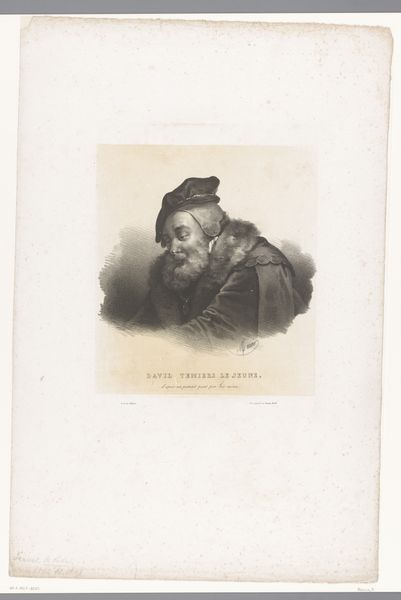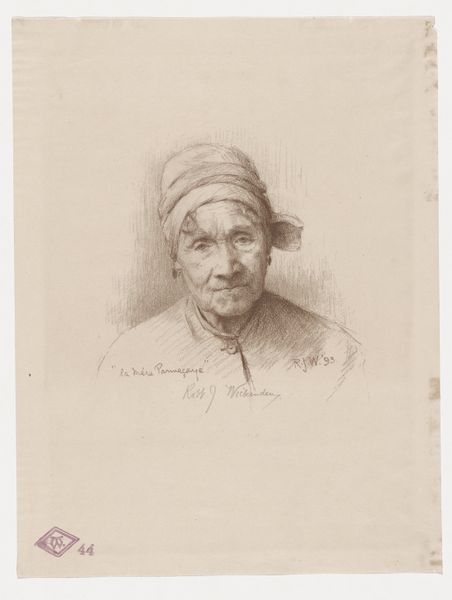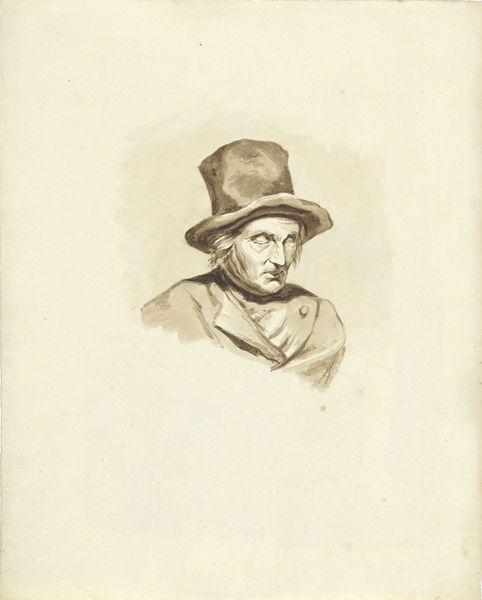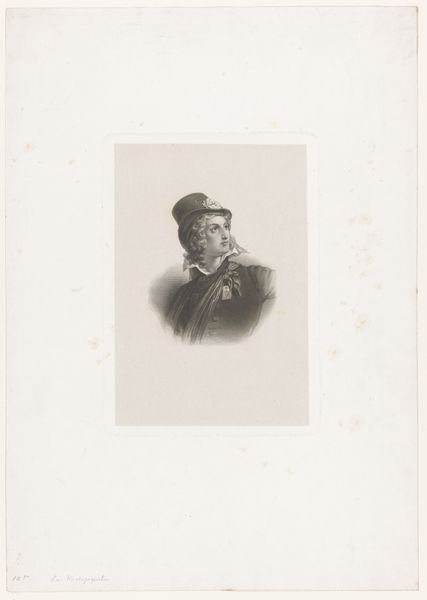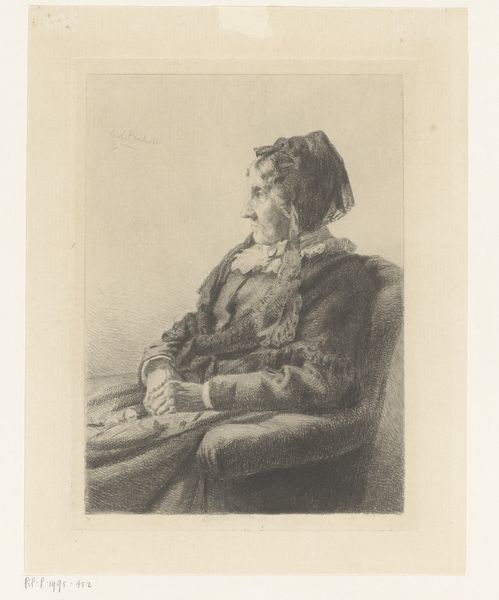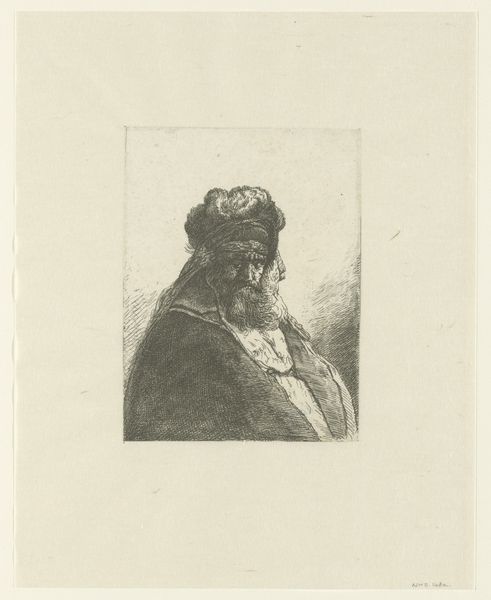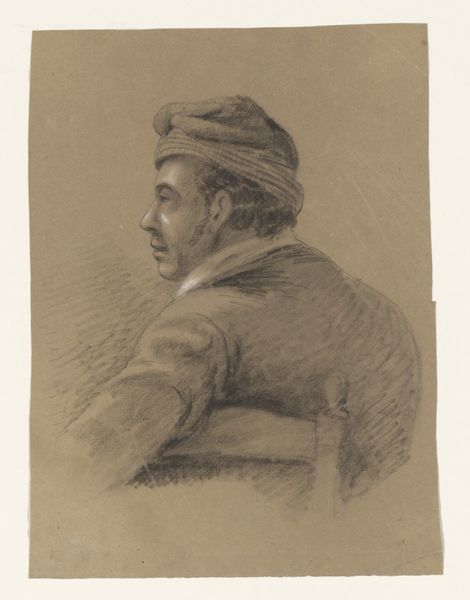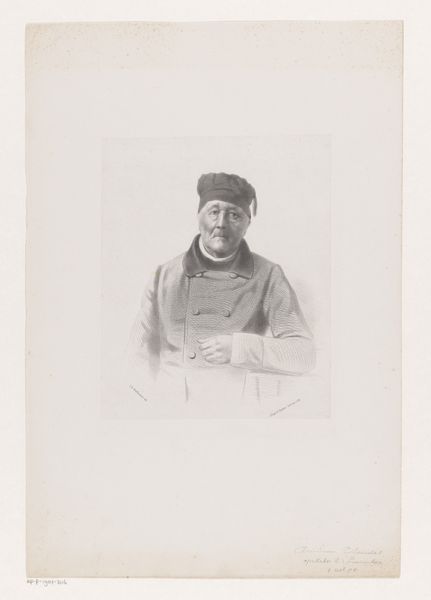
drawing, engraving
#
portrait
#
drawing
#
neoclacissism
#
traditional media
#
white palette
#
engraving
Dimensions: height 201 mm, width 162 mm
Copyright: Rijks Museum: Open Domain
Editor: Here we have Jean Jacques de Boissieu's "Portret van Cotrot" from 1770, created as an engraving. The detail is incredible! I'm struck by the man's intense gaze and the textures of his clothing. What do you see in this portrait? Curator: This portrait offers us a glimpse into the social structures of the 18th century. Think about the concept of "portraiture" itself. Who was typically immortalized in art during this period, and who was excluded? This man, Cotrot, seems to represent a segment of society often overlooked. What might Boissieu be trying to convey by focusing on him? Editor: Perhaps he was trying to give a voice to the voiceless? Or maybe challenge the prevailing norms of portraiture? Curator: Precisely. And how does Boissieu achieve this? Look at the details - the lines etched into his face, the worn hat, the simple clothing. These aren’t the markers of aristocracy; they tell a different story, one of perhaps labor, of hardship. But there’s also a quiet dignity present, wouldn’t you say? Editor: Yes, there's a certain gravitas to him despite his humble attire. I'm now considering how Boissieu's choice of medium, engraving, affects how we perceive the subject matter. The starkness amplifies the rawness, perhaps. Curator: Indeed. Engraving, with its precise lines, can be interpreted as a tool for both documentation and critique. By rendering Cotrot's likeness with such meticulousness, Boissieu elevates him, challenging societal hierarchies embedded in art history. Consider how the neoclassical movement at the time might inform or even push against such artistic choices. Editor: That's a great perspective. I hadn’t thought about how the artistic choices themselves could be a form of social commentary. Thank you. Curator: It's in these layers that art reveals its power—to reflect, to question, and ultimately, to provoke change in how we see the world and each other.
Comments
No comments
Be the first to comment and join the conversation on the ultimate creative platform.
